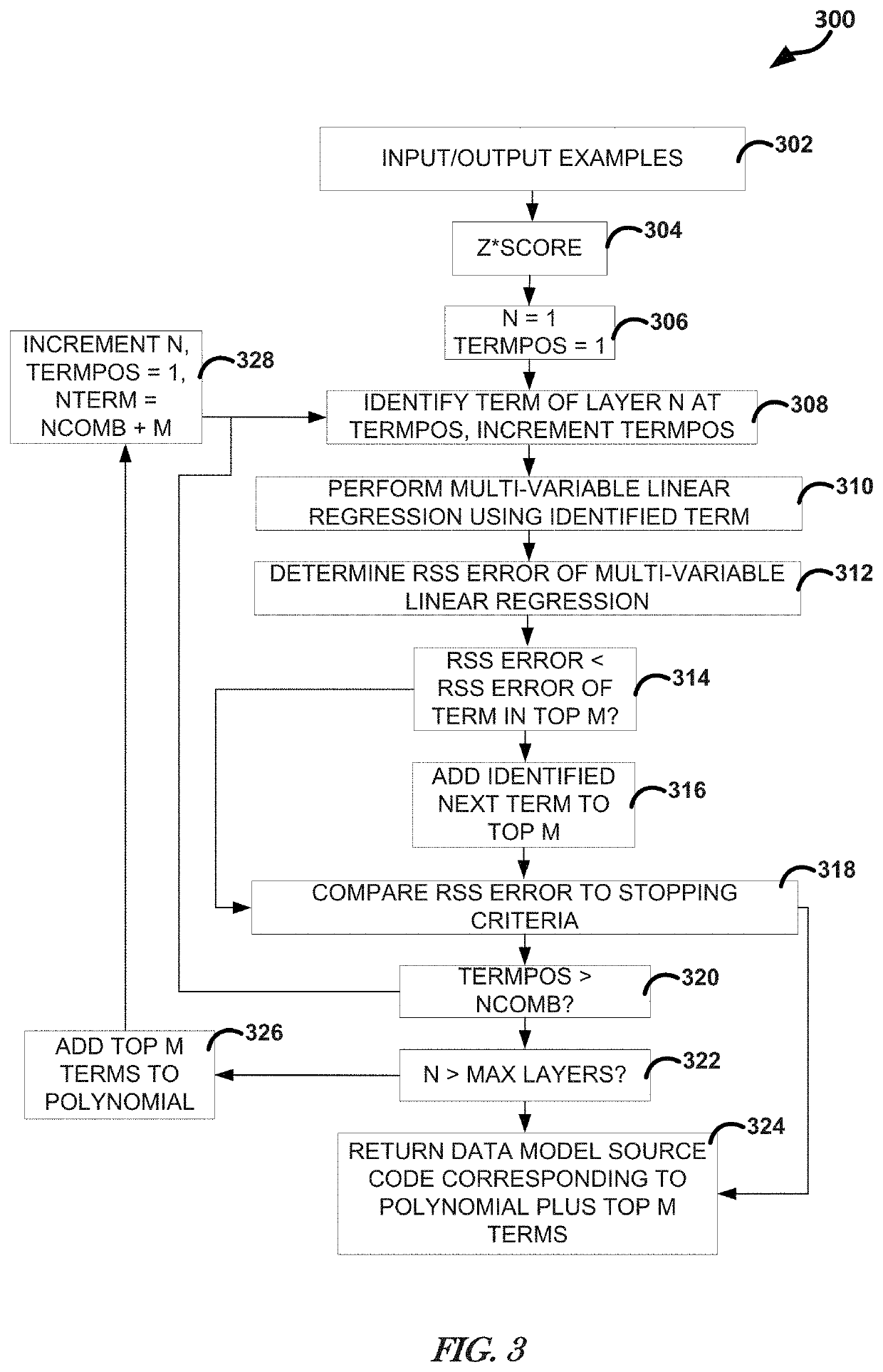Behavior monitoring using convolutional data modeling
- Summary
- Abstract
- Description
- Claims
- Application Information
AI Technical Summary
Benefits of technology
Problems solved by technology
Method used
Image
Examples
Embodiment Construction
[0022]The following description and the drawings sufficiently illustrate specific embodiments to enable those skilled in the art to practice them. Other embodiments may incorporate structural, logical, electrical, process, and other changes. Portions and features of some embodiments may be included in, or substituted for, those of other embodiments. Embodiments set forth in the claims encompass all available equivalents of those claims.
[0023]A Kolmogorov-Gabor (KG) polynomial is shown in Equation 2. Models resulting from use of the KG polynomial are known as polynomial neural networks.
Y(x1,…,xn)=a0+∑i=1naixi+∑i=1n∑j=inaijxixj+∑i=1n∑j=in∑k=jnaijkxixjxk+…Equation2
[0024]For modeling using GMDH, first, the number of inputs for each neuron, polynomial power, and input sources of layers after the first layer are decided. Then, the design process begins from the first layer and goes on. All possible combinations of allowable inputs (all possible neurons) are considered.
[0025]Drawbacks of t...
PUM
 Login to View More
Login to View More Abstract
Description
Claims
Application Information
 Login to View More
Login to View More - R&D
- Intellectual Property
- Life Sciences
- Materials
- Tech Scout
- Unparalleled Data Quality
- Higher Quality Content
- 60% Fewer Hallucinations
Browse by: Latest US Patents, China's latest patents, Technical Efficacy Thesaurus, Application Domain, Technology Topic, Popular Technical Reports.
© 2025 PatSnap. All rights reserved.Legal|Privacy policy|Modern Slavery Act Transparency Statement|Sitemap|About US| Contact US: help@patsnap.com



